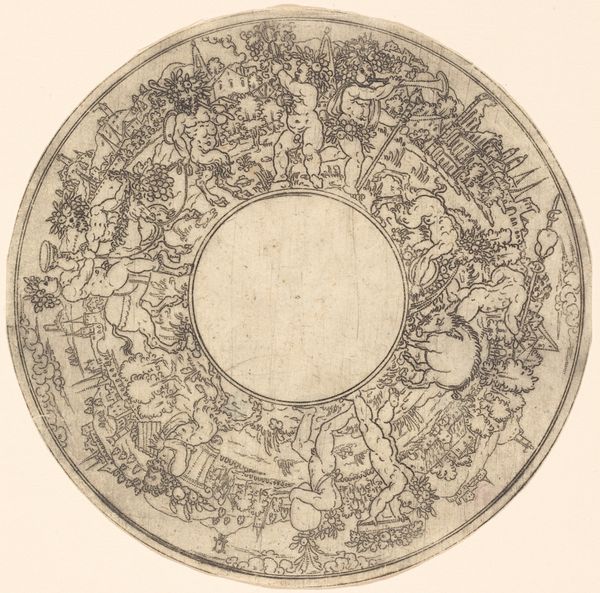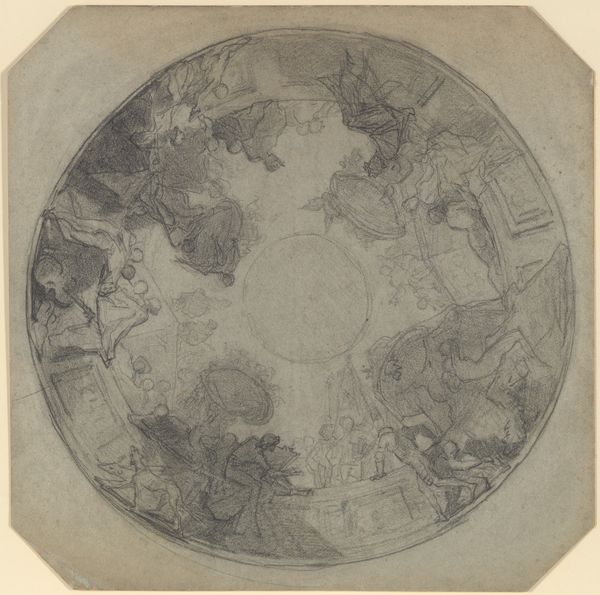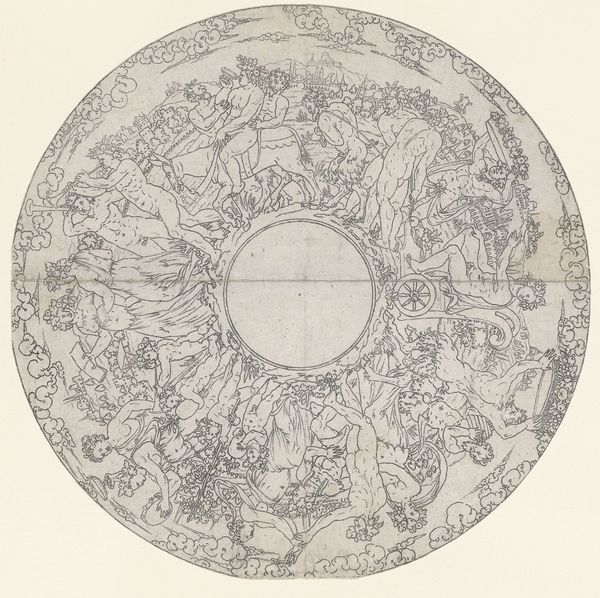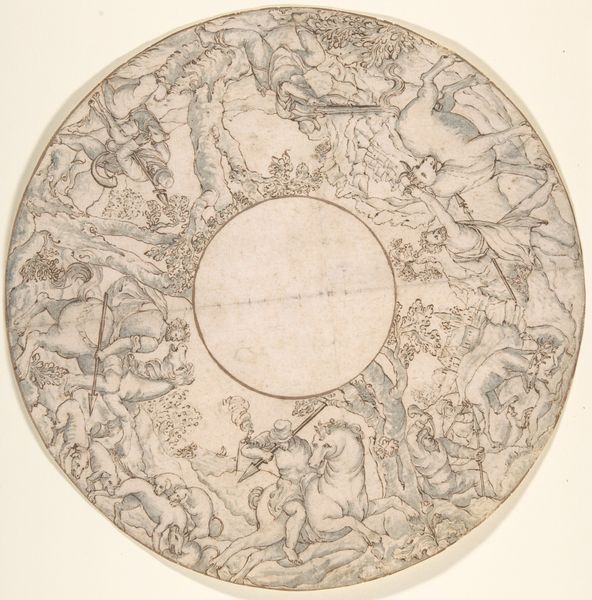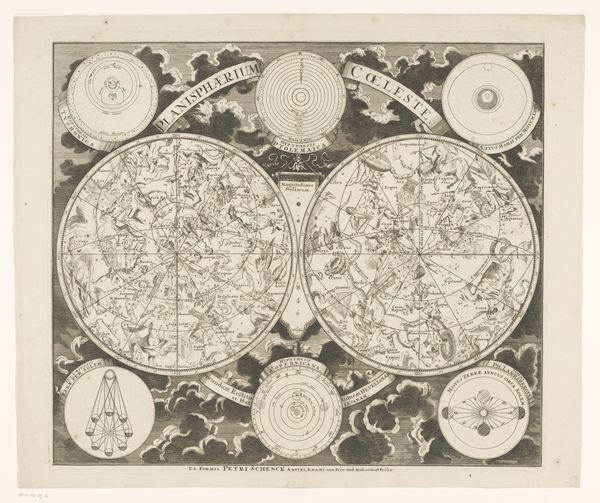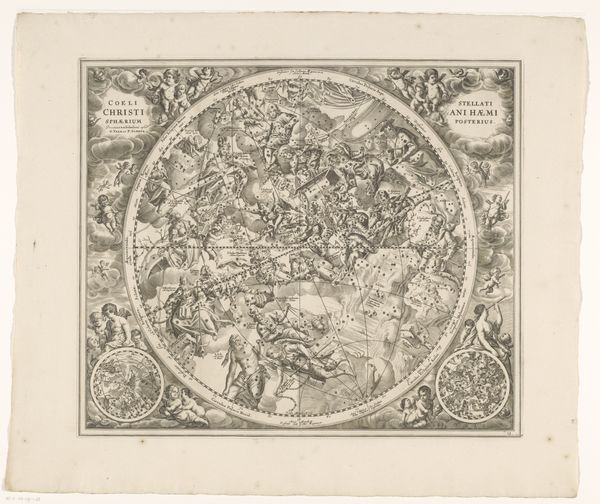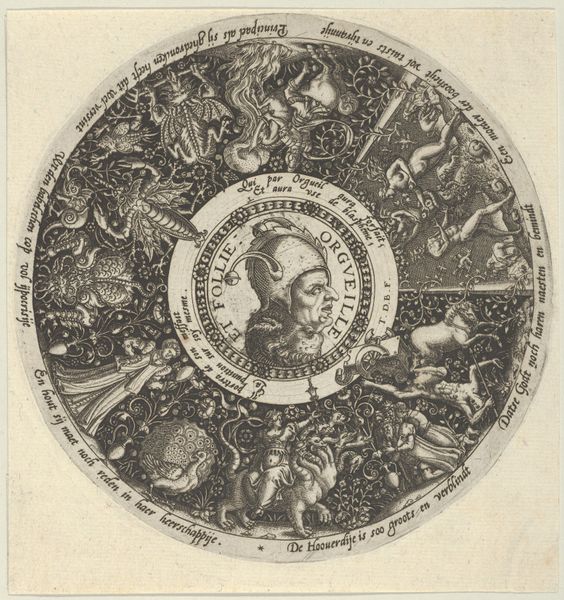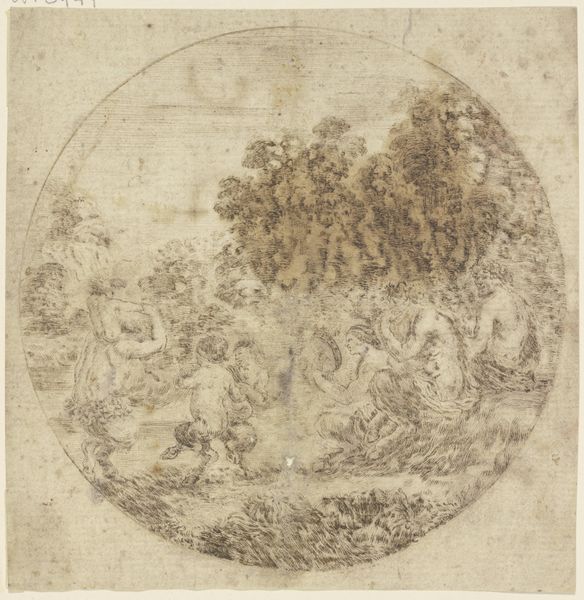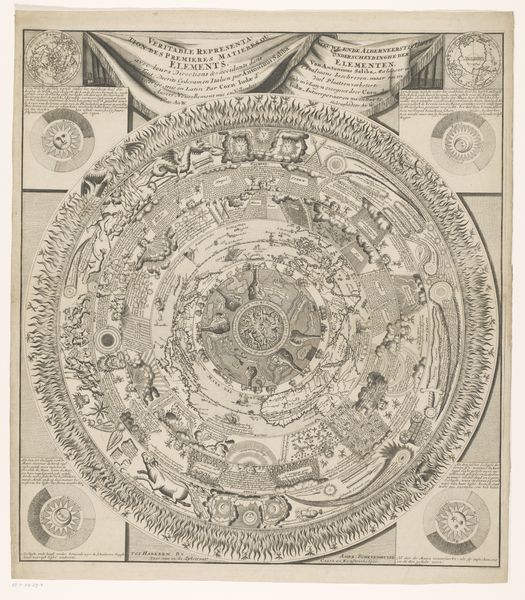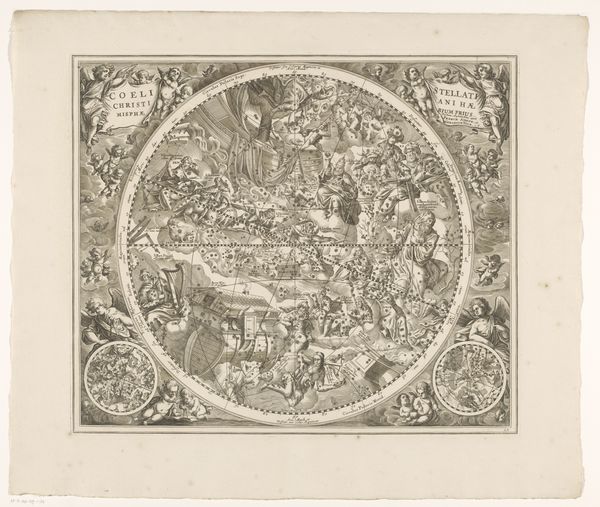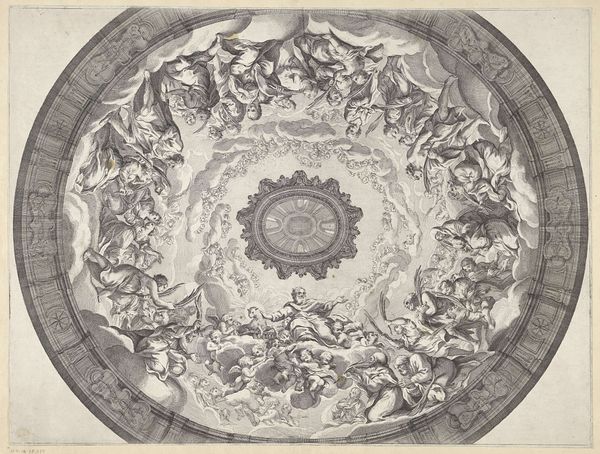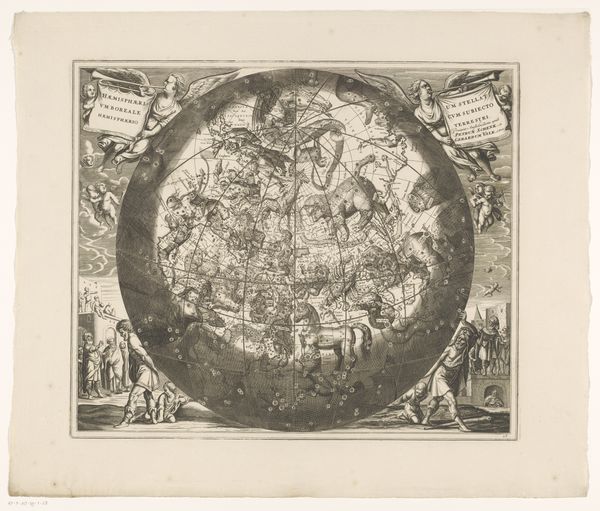
drawing, print, ink
#
drawing
#
allegory
#
pen drawing
# print
#
landscape
#
figuration
#
ink
#
italian-renaissance
Dimensions: sheet (trimmed within platemark): 13 × 13 cm (5 1/8 × 5 1/8 in.)
Copyright: National Gallery of Art: CC0 1.0
Editor: Here we have the "Triumphal Procession of Bacchus" an ink drawing, sometime between 1572 and 1589, likely intended as a print. The circular composition, almost like a plate, immediately gives it a decorative feel. There’s so much detail packed into this small space! How would you interpret the dense symbolism at play here? Curator: This is more than mere decoration. The imagery is rich in cultural memory, referencing Bacchus, the Roman god of wine, theatre, and ecstasy. Consider the circle: in Renaissance thought, the *tondo* or circular format symbolized perfection, wholeness. In it are bacchanalian scenes: drunken revelry, figures consorting with animals, a landscape peppered with architecture, classical references blending pagan and Christian elements as was common at the time. How do you see Bacchus himself represented in this, if at all? Editor: Well, I see figures draped in grapevines which I think point towards Bacchus, as does the general feeling of, as you said, drunken revelry, though there’s a menacing boar as well. Is it just me, or does that empty circle in the middle almost demand something be placed there, like a coat of arms or... Curator: Precisely! That blank space serves as an invitation. It anticipates ownership, or perhaps deeper meaning to be projected onto the image. The boar, certainly, could represent the wilder side of Bacchus, untamed nature, which Renaissance audiences would read into these symbolic tableaus. Consider too how different cultures and eras have reinterpreted these mythic figures—the continuing resonance of the image. Editor: So, even in something seemingly "decorative," we find layers of meaning reflecting cultural values and artistic intent! That emptiness in the middle is not an absence but rather a space pregnant with potential significance. Curator: Exactly! And each time we view it, we inscribe our own interpretations, layering it with further memory and meaning.
Comments
No comments
Be the first to comment and join the conversation on the ultimate creative platform.

